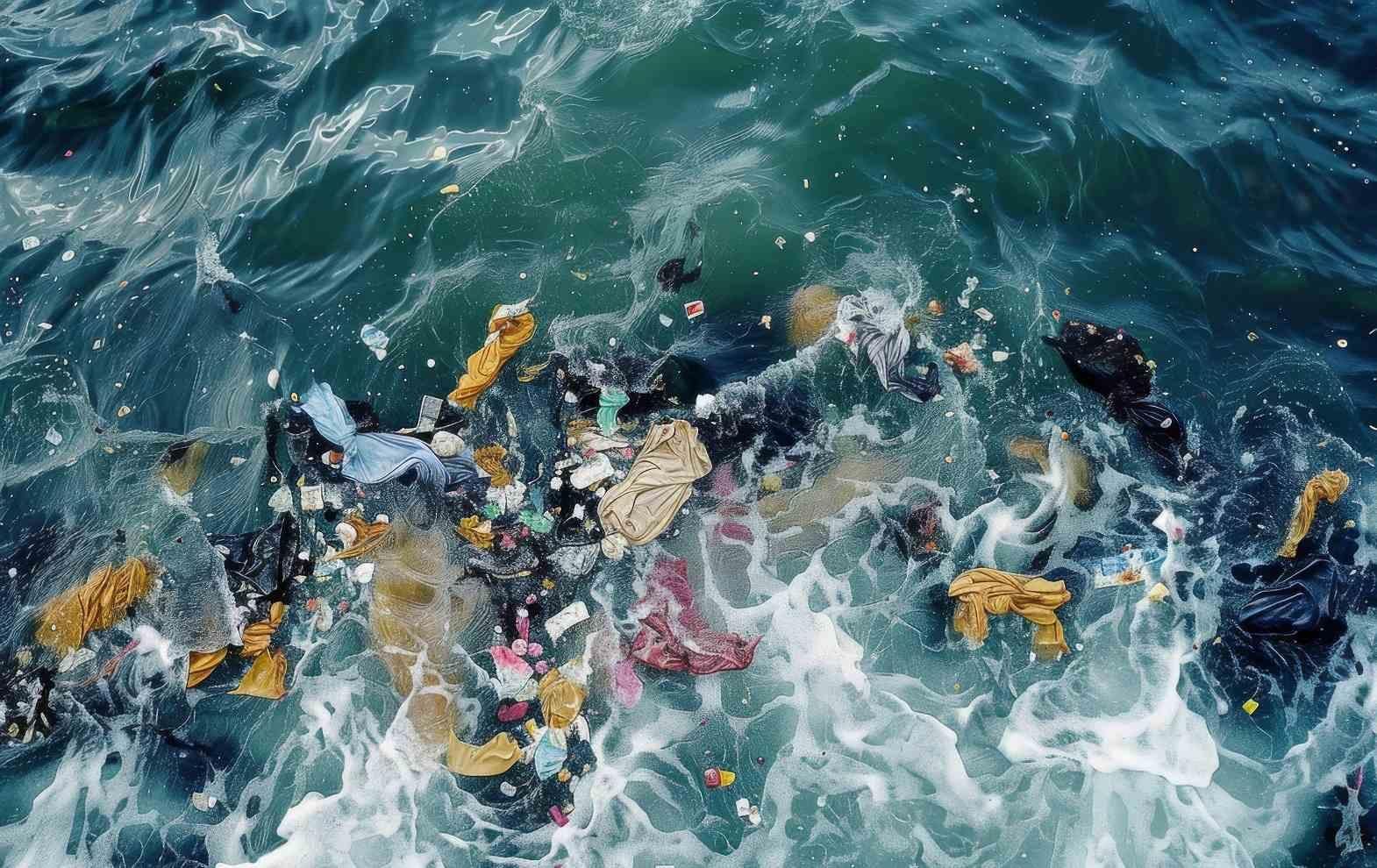The textile industry is a major contributor to aquatic pollution. Historically, effluents containing toxic dyes, heavy metals, and other contaminants were the primary concern. However, liquid effluents from textile mills and domestic laundry drains are now emerging as significant threats. Dyes, classified as micro-pollutants, can be detected in aquatic environments at concentrations as low as 1 mg/L. Heavy metals from these dyes can bioaccumulate, causing toxicity in aquatic species. The industry is linked to issues like extreme foaming in rivers, eutrophication, turbidity, and reduced water quality.
Phosphate-based surfactants lead to eutrophication, depleting dissolved oxygen vital for aquatic life. Colourants in water bodies block sunlight, impeding photosynthesis in aquatic plants. The chemicals used in textile processing have long-term effects once effluent streams enter waterways, with some chemicals bioaccumulating across the food chain. For example, per- and poly-fluoroalkyl substances (PFAS) used in water repellents are known for their persistence and have been banned by many regulations. By-products from textile pollutants have been linked to carcinogenicity, endocrine disruption, and mutagenicity.
In recent years, microfibre pollution has gained attention. Initially, synthetic textiles were thought to shed microfibres during washing, which then entered water bodies and food chains. These synthetic microfibres are often categorised as microplastics. However, research from Oregon State University has shifted the focus to microfibre pollution more broadly, as even cotton microfibres have been shown to affect the behaviour and growth of aquatic life and degrade soil health.
Special Cases of Aquatic Pollution Caused by Textile Industries
There are notable cases of textile pollution worldwide. In Tiruppur, Tamil Nadu, known as India’s knitwear capital, many textile mills were shut down after effluents caused infertility in the soil along the banks of the Noyyal river. In North America, microfibre concentrations in the Great Lakes are alarming, as these fibres are ingested by plankton, a crucial part of the food web. In the Baltic Sea, nitrogen- and phosphorus-rich effluents have led to significant eutrophication issues. Indonesia’s Citarum river, considered the world’s most polluted river, suffers from massive hazardous discharges from textile industries in West Java. As much of the textile production has shifted to South Asia, waste from the industry is clogging mangroves and water bodies in Bangladesh, disrupting aquatic habitats.
Technological Measures to Combat Aquatic Pollution
Various water treatment techniques, such as membrane filtration and electrocoagulation, effectively filter out toxic dyes and contaminants from textile industrial waste streams. Bioremediation, which uses no chemicals, relies on environmentally friendly enzymes to treat wastewater. Specific bacterial and fungal species can also degrade textile wastewater using biotechnology principles. Closed-loop systems like Zero Liquid Discharge (ZLD) ensure maximum water conservation.
Recent advancements in Artificial Intelligence (AI)-driven monitoring systems can now detect the quality of effluent streams and predict measures to prevent pollutants from reaching aquatic ecosystems. Researchers are also focusing on developing finishing chemicals with acceptable lethal dosages, where the LD50/LC50 values are crucial in new textile chemical formulations.
Companies such as Patagonia and Guppyfriend have developed laundry bags that trap shed microfibres, and Puma, in collaboration with the Better Cotton Initiative, is working to create textiles with reduced microfibre shedding. Anti-friction chemicals applied to yarns can also reduce fibre shedding by making them more resistant to wear and tear.
Innovation in washing machine technology is also a step forward in addressing the issue of microfibre pollution. Manufacturers like LG and BOSCH have developed machines with built-in filters that trap microfibres. Additionally, Whirlpool and BOSCH have designed advanced water circulation systems that reduce agitation, helping to preserve fabric integrity and minimise fibre shedding. Haier’s domestic laundry machines use dual drum technology, allowing for the simultaneous washing of two separate loads. This enables tailored washing conditions that minimise fibre wear depending on fabric type.
The International Union for the Conservation of Nature (IUCN) estimates that up to one-third of plastic debris in the oceans consists of microfibres shed during the washing of synthetic clothes. Microfibres have become pervasive, and there are currently no standardised tools to detect and quantify their release from textiles. Recently, Under Armour, in collaboration with the Hohenstein Institute in Germany, launched a pioneering test method to measure microfibre shedding from textiles. After simulated washing, the test uses a microscope to count the microfibres trapped on filter paper. Similar to the pilling test, a rating from 1 to 5 is given based on the level of microfibre shedding.
The Microfibre Consortium (TMC) has launched the ‘Microfibre 2030 Commitment’ to eliminate the environmental impact of microfibres from the textile industry by 2030. The initiative’s three-phase strategy, known as the Microfibre Roadmap, includes the following stages: Activate (2021-2023), Implement (2024-2027), and Scale (2028-2030). This roadmap seeks to unite textile industry stakeholders, promote research into fibre fragmentation, and implement measures to combat microfibre pollution.
Many leading fashion retailers, including the H&M Group, Adidas, Puma, Birla Cellulose, and Helly Hansen, are signatories of the Microfibre 2030 Commitment. They are required to conduct material testing and contribute data to a centralised portal to help develop practical solutions for microfibre pollution.









Comments